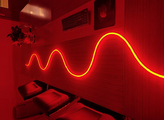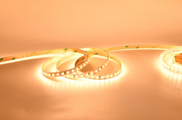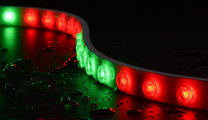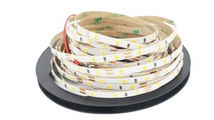How to effectively improve the quality and life of LED lamp beads
In order to ensure the quality of products, companies usually spend a higher cost to select high-quality LED lamp beads, but why do they always fail to achieve the ideal lifespan or the light decay exceeds expectations?
Although the quality of LED lamp beads directly affects the life and light decay of the lamp bead, there are many other factors that also affect its life and light decay.
We talked about the influence of voltage and current earlier. Today I will talk about the influence of heat dissipation on LED lamp beads.
Heat dissipation is a problem that many LED lamp beads have been facing. We all know that if an LED lamp bead wants to achieve sufficient brightness, we need high enough power and a certain number of lamp beads. When the power and quantity increase, the temperature of the lamp beads and their working environment will rise rapidly (someone may have some questions here, about whether the LED lamp beads are cold light sources or hot light sources? Is the cold light source the correct amount of heat? A simple explanation Yes, the light-emitting principle of LED lamp beads is a cold light source, because the heat generated by its light emission is very low (the reason for its heat generation is based on the law of conservation of energy: the electrical energy introduced into the LED lamp beads cannot be completely converted into light energy, and the remaining part will be converted into other energy. Energy is mainly converted into heat energy (see "Energy Conservation Law" below). Good lamp beads cannot work in high temperature environments for a long time. When the temperature reaches a certain value for a long time, it will affect the LED lamp beads and chips, causing light decay. , or even damaged.

Now there are mainly the following cooling methods.
Aluminum heat sink. This is the most common way of heat dissipation, aluminum heat dissipation, and fins as part of the shell to increase the heat dissipation area.
Aerohydrodynamic heat dissipation. Aerodynamics uses the shape of the lamp housing to create air convection, which is the lowest-cost way to enhance heat dissipation.
Surface radiation treatment. The surface of the lamp shell is treated with radiation heat dissipation. Just apply radiation heat dissipation paint, and the heat can be taken away from the surface of the lamp shell through radiation.
Use a fan. A long-life, high-efficiency fan is used inside the lamp housing to enhance heat dissipation, with low cost and good effect. However, it is troublesome to replace the fan and it is not suitable for outdoor use. This design is relatively rare.

Through heat pipe: Use heat pipe technology to transfer heat from the LED chip to the heat sink of the housing. It is a common design in large lighting fixtures such as street lamps.
Thermal conductive plastic housing. Thermal conductive material is filled in the plastic shell during injection molding to increase the thermal conductivity and heat dissipation of the plastic shell.
Use liquid bulbs. Using liquid bulb packaging technology, a transparent liquid with high thermal conductivity is filled into the bulb of the lamp body. In addition to the reflection principle, this is the only heat conduction and heat dissipation technology that uses the light-emitting surface of the LED chip.
The law of conservation of energy is one of the universal basic laws of nature. Generally expressed as: energy will neither be created out of thin air nor disappear out of thin air, it will only be converted from one form to another form, or transferred from one object to other objects, while the total amount of energy remains unchanged. It can also be stated as: The total energy of a system can only change by the same amount as the energy transferred into or out of the system. Total energy is the sum of the mechanical energy, internal energy (heat), and any form of energy other than mechanical energy and internal energy of the system. If a system is in an isolated environment, no energy or mass can be transferred into or out of the system. For this case, the law of conservation of energy is expressed as follows. "The total energy of an isolated system remains constant.





